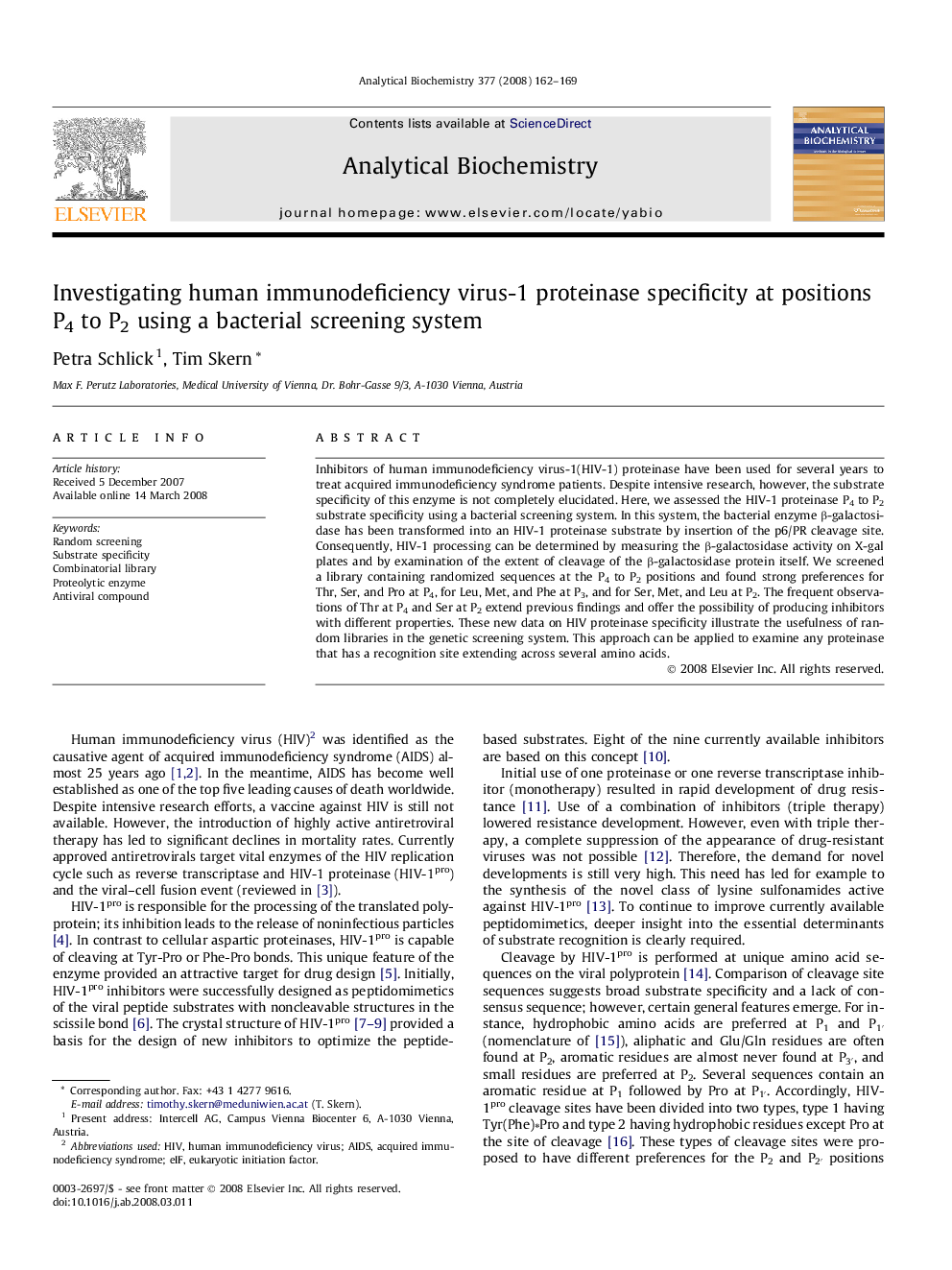| Article ID | Journal | Published Year | Pages | File Type |
|---|---|---|---|---|
| 1176335 | Analytical Biochemistry | 2008 | 8 Pages |
Inhibitors of human immunodeficiency virus-1(HIV-1) proteinase have been used for several years to treat acquired immunodeficiency syndrome patients. Despite intensive research, however, the substrate specificity of this enzyme is not completely elucidated. Here, we assessed the HIV-1 proteinase P4 to P2 substrate specificity using a bacterial screening system. In this system, the bacterial enzyme β-galactosidase has been transformed into an HIV-1 proteinase substrate by insertion of the p6/PR cleavage site. Consequently, HIV-1 processing can be determined by measuring the β-galactosidase activity on X-gal plates and by examination of the extent of cleavage of the β-galactosidase protein itself. We screened a library containing randomized sequences at the P4 to P2 positions and found strong preferences for Thr, Ser, and Pro at P4, for Leu, Met, and Phe at P3, and for Ser, Met, and Leu at P2. The frequent observations of Thr at P4 and Ser at P2 extend previous findings and offer the possibility of producing inhibitors with different properties. These new data on HIV proteinase specificity illustrate the usefulness of random libraries in the genetic screening system. This approach can be applied to examine any proteinase that has a recognition site extending across several amino acids.
